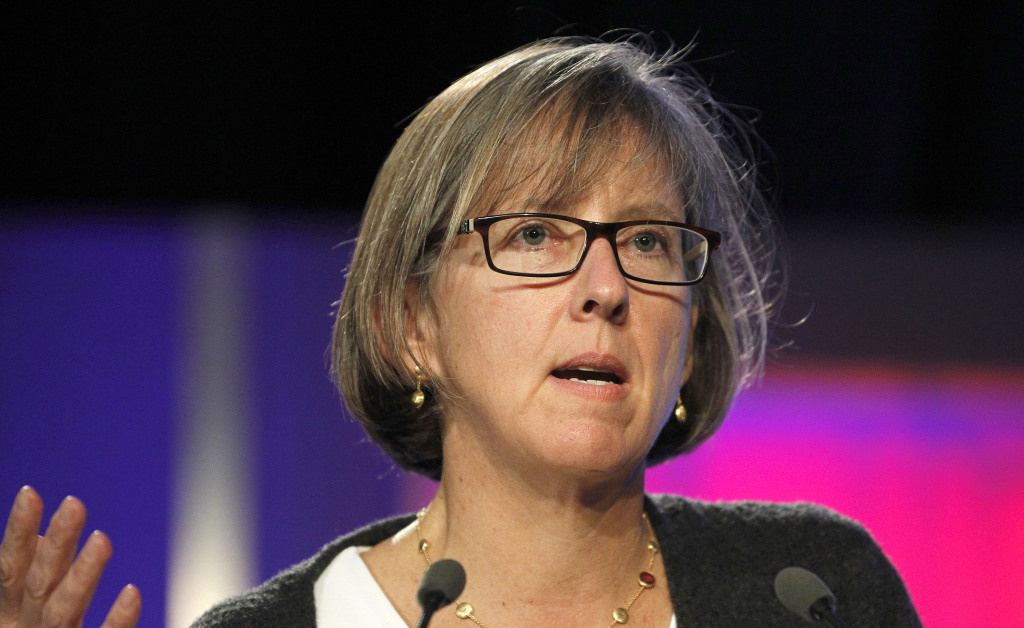Mary Meeker 2018: What marketers need to know
- Monday, June 4th, 2018
- Share this article:
As always, Mary Meeker’s annual Internet Trends Report is a treasure trove of information and insights into the changing landscape of the digital world, but at 294 pages, there’s almost too much information to digest.
While the full report is worth digesting when youve got a chance, weve broken down some of the key insights that marketers should focus on when it comes to thinking about 2019 and beyond.
 Half The Planet Is Online
Half The Planet Is Online
Internet growth is slowing, with new smartphone unit shipments stable from 2016 to 2017, and global internet user growth slowing from 12 per cent in 2016 to seven per cent in 2017. Still, at 3.6bn users and rising, over half the world’s population will have access to the internet by the end of the year. That’s an exciting figure in terms of the available audience for any given app or digital service, but also means that growth will be increasingly harder to find.
Daily hours spent with digital media per adult user was up to 5.9 hours per day, with 3.3 of those spent on mobile, compared to 2.1 on desktop or laptop. Mobile is now the primary channel for reaching consumers digitally.
Mobile services: More competition, more innovation
Mobile hardware is becoming better, faster and cheaper, and access to wi-fi is growing exponentially, spurring innovation. Digital services are becoming easier to use, with areas like payments now dominated by digital, albeit fractured among various platforms and subcategories like in-app payments, QR codes and P2P transfer.
Indeed, Meeker places a considerable focus on payments, showing how declining friction has seen mobile payments hit 500m users in China alone, while digital cryptocurrencies have seen big spikes in adoption across 2017 alone.
The use of services like messaging and video on mobile continues to rise, with new content types like live-streamed video games emerging. Twitch, the Amazon-owned platform that focuses on gaming livestreams, surpassed 15m average daily streaming hours in 2017, thanks to the success of games like Fortnite. High engagement levels are crucial for online services, with revenue increases typically tied closely to daily user growth.
Voice has taken off in a big way as technologies like Google’s machine learning-powered voice recognition has hit the threshold for human accuracy. With it, the install base of products like the Amazon Echo has exploded, increasing by 50 per cent year-on-year, with a similar growth in the number of Skills available.
Investment into technology is at its highest in the past two decades, approaching $200bn (£150bn) in technology IPO and private financing for US-listed firms alone. US information tech companies represent 25 per cent of the entire US market capitalisation, as well as six of the top 15 spenders (and the entire top five) when it comes to research & development and capital expenditures.
 Data under a spotlight
Data under a spotlight
Better use of personal and collective data is being used to provide better experiences for consumers, with services like Waze, UberPOOL and Nextdoor Recommendations all relying on big data to function. Off course, this increased use and the improved monetisation it is driving has also attracted regulatory attention, as have several high-profile data-related scandals. Weighing in on the balance of free enterprise versus legislation, Meeker warned that its crucial for both tech firms and governments to manage for unintended consequences, but that stopping innovation and progress is also irresponsible.
While the growing use of data is improving things like machine learning algorithms, firms are having to approach it carefully due to growing consumer awareness over how their personal data is used. Trust is still relatively high, with 79 per cent of consumers willing to share personal data for “clear personal benefit”, but 64 per cent also admitted to deleting or avoiding certain apps over data privacy concerns, and 47 per cent had adjusted their mobile privacy settings.
The data opportunity is especially present in China, where consumers are more willing to share highly personal data like financial records or driving history in return for benefits like lower costs or increased personalisation. With a high number of consumers using services that harvest vast amounts of first-party data, China may chart the future when it comes to data.
Blurring the retail lines
eCommerce continues to accelerate after a slowdown earlier in the decade, with sales up 16 per cent year-on-year, compared to 14 per cent in 2016. Sales in the USA alone passed $400bn last year, and now make up 13 per cent of all retail spending. Amazon is increasingly dominant in the eCommerce sphere, with its gross merchandise share growing from 20 per cent in 2013 to 28 per cent in 2017. Amazon also dominates retail search, with 49 per cent of consumers beginning a product search with the retail giant.
eCommerce and retail in general is increasingly personalised and mobile-driven, with offline merchants adopting mobile and online payment systems, which in turn enable them to integrate tools like fraud prevention and purchase financing. The long-term decrease in physical retail sales continues, with growth down to less than three per cent year-on-year.
Social media is driving product discovery and purchasing, with 78 per cent of consumers having discovered a product on Facebook, 59 per cent on Instagram and Pinterest, and 34 per cent on Twitter. Of those who have discovered products in this way, an impressive 55 per cent went on to purchase the product at some point. Overall, eCommerce referrals from social media are up to six per cent of all purchases from two per cent in 2015.
 With great advertising comes great responsibility…
With great advertising comes great responsibility…
When it comes to advertising, the shift to mobile continues, as ad spending gets closer in line with the average time spent in media. Print is still heavily over-indexed, with nine per cent of spending compared to four per cent of time, while both mobile (29 per cent of time vs. 26 per cent of spending) and radio (13 per cent of time vs. nine per cent of spending) under-indexed. That gap in mobile ad spending represents a $7bn opportunity for marketers.
Overall internet ad spending hit $88bn, with growth slowing slightly year-on-year, from 22 per cent to 21 per cent. Mobile now accounts for over half of all digital spending by a healthy margin, but consumer concerns about content platforms like Facebook and YouTube is rising, leading to a need for more spending on initiatives aimed at removing abusive or fraudulent content.
















